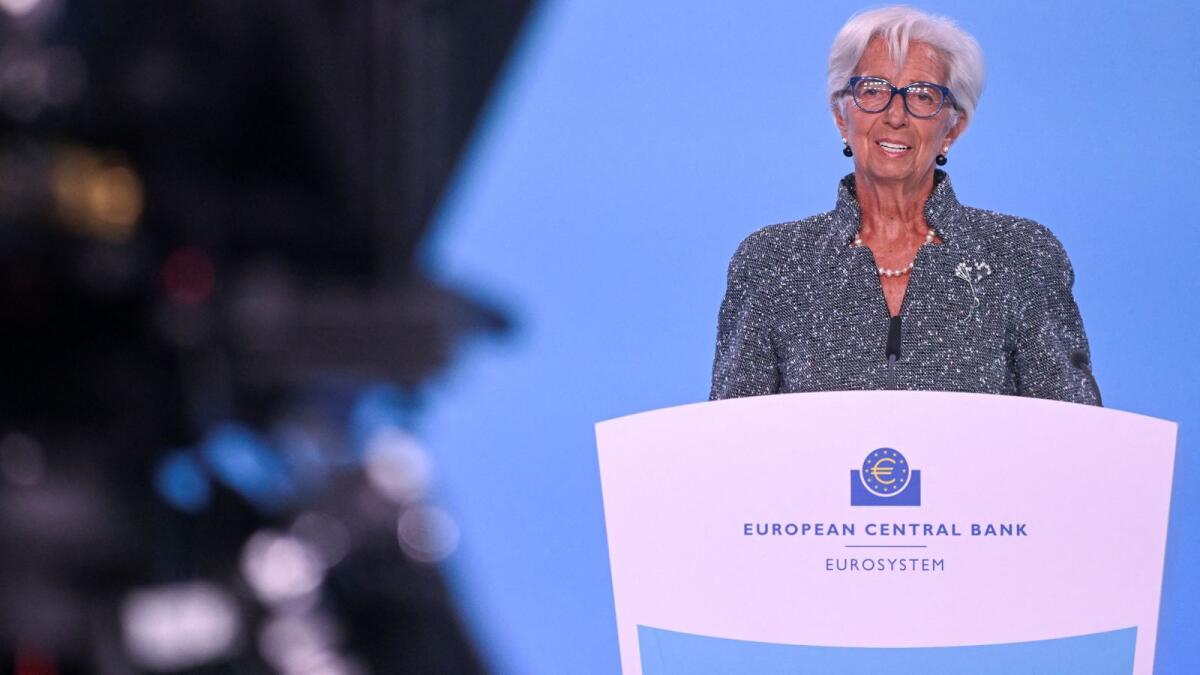The European Central Bank (ECB) recently announced a cut in interest rates due to slowing inflation and faltering economic growth. The 25 basis points reduction brought the deposit rate to 3.50 per cent, while the refinancing rate was slashed by 60 basis points to 3.65 per cent. This move was expected, as inflation has been inching closer to the target of 2 per cent, and the domestic economy is teetering on the edge of a recession. Following the rate decision, the euro briefly rose to $1.1028, while European stocks and government bond yields remained steady. Financial markets are pricing in further easing by the end of the year, with a 42 per cent chance of another rate cut in October.
Experts in the financial industry are closely monitoring the situation and providing their insights on the ECB’s decision. Yael Selfin, chief economist at KMPG, UK, believes that while there is consensus about easing policy restrictiveness, there are differing opinions on the pace of rate cuts. Selfin expects another rate cut in December, possibly taking the deposit rate down to 3.25 per cent. Lindsay James, an Investment Strategist at Quilter Investors, London, predicts that the ECB may struggle with further rate cuts due to limited options and will heavily rely on upcoming economic data to make decisions.
Neil Birrell, CIO at Premier Miton Investors, UK, highlights the importance of monitoring economic data to determine the timing of the next policy move. Carsten Brzeski, global head of macro at ING, Frankfurt, expects the ECB to increase the pace of rate cuts next year, as opposed to this year. Sylvain Broyer, chief EMEA economist at S&P Global Ratings, London, explains that the recent rate cut was in line with expectations and does not foresee any significant impact in the short term. The ECB’s decision aligns with the need for further easing in the near future, according to Marchel Alexandrovich, economist at Saltmarsh Economics, London.
Hussain Mehdi, director investment strategy at HSBC Asset Management, UK, emphasizes that the uncertainty surrounding the global economic outlook calls for caution. While the current environment may be conducive for risk assets, he warns of volatility and the risk of a hard landing in the future. The potential for further rate cuts in 2025 remains uncertain, with market conditions playing a key role in shaping future policy decisions. Despite the challenges ahead, experts are cautiously optimistic about the ECB’s efforts to stimulate the eurozone economy and navigate through turbulent times.
The ECB’s decision to cut interest rates reflects the ongoing challenges faced by the eurozone economy, including sluggish growth and subdued inflation. While the immediate impact of the rate cut is being felt in financial markets, the long-term implications remain uncertain. As policymakers continue to monitor economic indicators and assess the need for further stimulus, investors and analysts are closely watching for any signals that could shed light on the ECB’s next steps. With expectations of additional rate cuts in the near future, the eurozone economy is poised for a period of transition and potential growth as the ECB navigates through uncertain waters.











